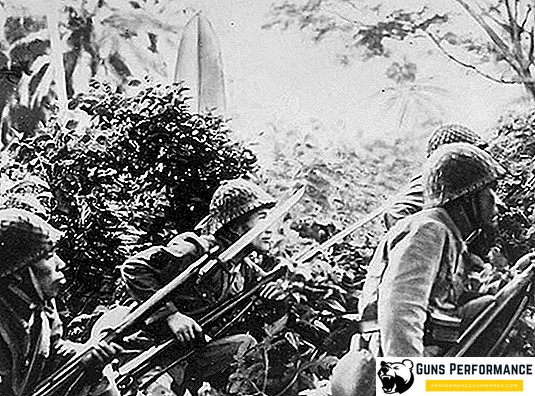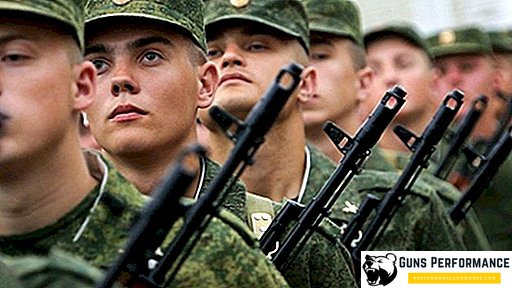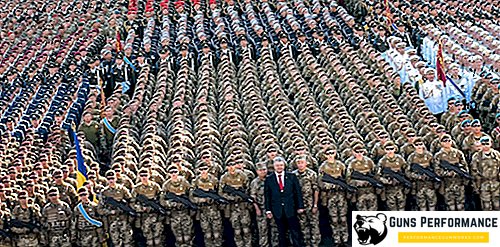In the winter of 1945, not wanting to surrender to the troops of the anti-Hitler coalition, the thousandth Japanese detachment on the island of Ramry almost completely disappeared. Only a couple of dozen soldiers remained. According to the Canadian naturalist, the cause of the death of the detachment were numerous crocodiles living in mangrove swamps. Whether there really was such a fact in history is still argued by experts.

The story is creepy and mysterious
Despite a comprehensive study of the Second World War and the presence of a huge amount of documentary information, much of those events remains a mystery to this day. So, Robert Capa himself, risking his life, managed to capture the actions of the Allies during the landing in Normandy on June 6, 1944. His pictures are full of details. Surprisingly, with a large amount of seemingly reliable information, it was not without white spots.
One of the most mysterious and curious historical episodes is the strange disappearance of the Japanese squad. February 19, 1945 a thousand soldiers during the guerrilla war for the island of Ramry (Burma) went into the rainforest and died there. This event caused a real sensation and was recorded in the Guinness Book of Records as the death of the largest number of people from the teeth of wild animals.
However, this fact is recorded only on the testimony of a Canadian naturalist.
One of the battle participants, a British soldier Bruce S. Wright, later becoming a Canadian naturalist, wrote the book Essays in the Wild, Close and Far, where he described the disappearance of the Japanese. According to Stanley Wright, Japanese fighters hiding in mangroves were torn to pieces by reptiles. Other scientists consider such a large-scale disaster impossible and cast doubt on the accuracy of information from the book by Stanley Wright, which became the basis for the fact in the Guinness records.

The worst disaster in British history
In the early 40s of the last century, the British entrenched in Singapore south of Malaysia, creating a colony there. They succeeded by conquering smaller enclaves such as Gibraltar. Planning further military capture in this part of Asia, the British government sent countless troops there. The Singapore colony was a very important strategic object of the region, all the sea routes of South Asia intersected here, which means it personified British rule in the east. The political importance of the colony is confirmed by the journalist and historian Jesús Hernández in the book The Mysteries and Secrets of the Second World War.
The British coped with the seizure of new and new territories, while the Japanese, after the attack on Pearl Harbor, did not attack large British bases in Asia. It happened on December 8, 1941. Allied forces had to retreat to Singapore itself. As described by Javier Sanz in Trojan Horses of History, it was a fortress defended by "more than eighty thousand soldiers supported by air defense forces and heavy artillery to repel naval strikes from the south." From the north, the Japanese infantry and artillery could not pass because of the tropical swampy forests overgrown with mangroves. Thus, the British felt safe in Singapore.
However, the confidence of the British was not justified. General Tomoyuki Yamashita (Tomozuki Yamashita) for several weeks during an unprecedented operation surrounded the city and began a siege. "Down on the western coast of Malaysia, Japanese soldiers attacked Singapore from the rear. The British did not have time to create a strong line of defense here and could not hold back the onslaught of the warlord, known by the nickname Malayan Tiger," for more than a week, Hernandez writes in his book.
As a result, the British suffered a fiasco, which Churchill called "the worst catastrophe in British history." So the British domination fell in the east, but the British exit from the region lasted another three years.
Return of territories
Japan’s defeat became apparent in 1945, and the Allies set out to reclaim their lost territories. In the winter of 1945, the 14th British Army launched an offensive with the intention of landing on the west coast of Burma to capture and clear the Japanese islands of Ramri and Cheduba. About this tells the journalist and historian Pedro Pablo May (Pedro Pablo G. May) in "Military Mistakes".
Facts about the attack are also described in Edwin Gray's "Operation Pacific". Before the attack, the British made preliminary raids to the islands by canoe, feeling for the weak points of the Japanese defense. As a result, the scouts found out that the enemy didn’t have enough men or weapons for military action, and the British went on the offensive. Started shelling enemy positions with the battleship "Queen Elizabeth" and light cruiser "Phoebe". Artillery was followed by several air strikes of the Royal British Air Force.
January 21, 1945, the British began an operation called "Matador". During it, the navy landed off the coast of Ramri Island to capture the strategically important port of Kyaukpyu and the airport. The report "Crocodiles-cannibals: an attack on the island of Ramry" confirms the fact of landing the British. And in the progress report made by the British captain Eric Bush (Eric Bush), outlined the objectives of the attack and noted that the blow was struck by the 26th Indian Infantry Division and the units under the command of Major General Lomax. The report was published in the book The Battle for Burma 1943-1945: from Kohima and Impala to Victory.
Operation "Matador", the battle
In his report, the British captain Eric Bush reported on "serious resistance" from the Japanese, which, however, was suppressed by the British and allies, the Japanese were forced to go deep into the island. Soon positions began to change. In each grove and behind each bush fierce battles were fought over the territory, but the partisan defense of the coast led nowhere. The advantage was then on one, then on the other side with a slight advantage. For several weeks such a military situation was maintained.
“Then the British marines managed to encircle a Japanese detachment of about a thousand people who were offered to surrender,” described in “Military Mistakes”.
The Japanese commander did not take advantage of the offer and, after dark, led his soldiers to the main forces through the mangroves. The maneuver to get out of the rear and the enemy’s entourage of the 71st Indian Infantry Brigade forced the Japanese to leave their shelters, which allowed the 4th Indian Brigade to cross Chaung Island and begin their pursuit. Such information is contained in the documents.
Tropical trap
The Japanese detachment needed to overcome about 16 kilometers of mangroves in order to reach its main forces. The tropical forest is a swampy territory where liquid mud reaches the waist, and sometimes even higher, inhabited by dangerous predatory and poisonous living creatures. Individual inhabitants, such as snakes and giant crocodiles, reach several meters in length. For example, crested crocodiles can weigh 1.5 tons and reach seven meters. Scorpions and spiders are no less dangerous. Captain Bush described all these details in his report. With no food and water, this was the worst possible escape.
The book of naturalist Bruce Wright describes how, after dusk on February 19, the British heard the terrifying cries of hundreds of people coming from the jungle where the Japanese had gone. Scattered shots came from the swamps, they were muffled by the cries of people and the terrible sounds made by giant reptiles. At dawn the vultures flew. Of the thousands of soldiers who went into the marshes, barely twenty survived. Prisoners who managed to pull out were extremely dehydrated and mentally depleted.
As noted by the naturalist Bruce Stanley Wright, the attack of crocodiles turned out to be in the hands of the Allied forces and made it easier for them to destroy the enemy. Long pursuit of the Japanese was not required. Researcher Javier Sanz also claims that that night only one Japanese man came out and surrendered - a doctor who studied in the USA and England. He spoke English and was asked to help convince other soldiers to voluntarily surrender. But not a single Japanese man ever came out of the mangroves.

Disputes of scientists and experts
The book of Canadian naturalist Bruce Stanley Wright, an eyewitness to the events and a former soldier of the British army, is still causing heated debate. There are scientists who confirm the facts stated, but there are those who dispute them. The Swiss biologist Charles Albert Walter Guggisberg (Charles Albert Walter Guggisberg) said that most Japanese died in the teeth of crocodiles and only a few died from gunshot wounds.
Burma Star Association (The Association of Participants in Hostilities) also confirms everything that is written by a Canadian naturalist. And the publishers of the Guinness Book of Records took information from the book of Stanley Wright as the basis for asserting the fact of the death of the greatest number of people from animal attacks. However, due to ongoing disputes, in 2017 several lines were added to this article about doubts: “The new studies of the National Geographic Channel question the veracity of this story, at least in terms of the number of victims”.
In recent years, the weight of the version that even crocodiles are very dangerous and can eat people is gaining weight, yet their role in many cases of death of people is sharply exaggerated.
Dear British historian Francis James McLynn in his book The Burmese Campaign: From Defeat to Triumph, 1942-45, is skeptical about the situation with crocodiles. He reasonably notes that such a number of crocodiles, which are described by eyewitnesses, simply will not survive in mangrove swamps due to famine. There are not many large animals in the swamp. What, then, did the crocodiles eat before the arrival of the Japanese to the swamps? And this is the logic.
A great contribution to the clarification of the history made a scientist Steven Platt (Steven G. Platt). He managed to find real eyewitnesses to the events. They were 67–86 years old in 2000, and they were in that place and saw what had happened that day with their own eyes. Most of them claim that the crocodiles really attacked people, but no more than 10-15 Japanese died from their fangs. Most died from diseases (dysentery, malaria and other infections), hunger, dehydration, bites of poisonous insects, snakes, and part of the soldiers were shot.
In the process of studying documentary sources, the conclusion is that the role of crocodiles in the death of a detachment of a thousand Japanese soldiers is greatly exaggerated. In their report "Crocodiles-cannibals: an attack on Ramri Island", the authors note the lack of sufficient evidence on this topic. Experts generally doubt whether the Canadian naturalist Stanley Wright was personally at the site of the tragedy at that time or did he write a book on the stories of local residents. So it is still not clear whether the tragedy with the crocodiles is a myth of the Second World War or whether these are real events. Obviously, the truth is somewhere in the middle.












